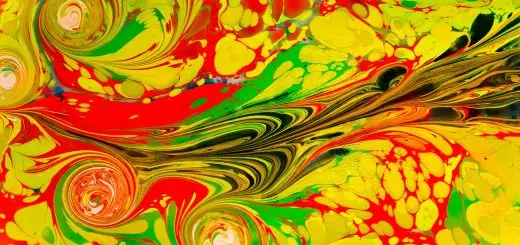Puja Ceremonies for Spiritual Renewal

Looking for more amazing products? Check out our online store and explore our collection here! Happy shopping!
Before diving in, please note: This post is for informational purposes only. If you’d like to know more about how we approach topics, feel free to check out our friendly Disclaimer Page.
Hey there, amazing readers! 
We’re committed to delivering quality posts, and your support (even just sticking around despite the ads) means everything to us. So, bear with us, and thanks for helping us keep the good vibes rolling. Now, on to the fun stuff!
TRANSLATE BUTTON AT THE END OF THE ARTICLE
A Quick Overview
Participating in Puja ceremonies is a deeply spiritual and renewing practice in Hinduism, Buddhism, and other Eastern religions.
These ceremonies involve offering prayers, rituals, and offerings to deities or spiritual entities to seek blessings, guidance, and spiritual growth.
Puja ceremonies are believed to help individuals connect with their inner selves, cultivate positive energy, and bring about inner peace and clarity.
In this article, we will explore the importance, history, types, significance, preparation, traditional items, mantras, benefits, healing and protection aspects, deity connection, and ways to incorporate Puja into daily life.
Importance of Puja Ceremonies for Spiritual Renewal
Puja ceremonies play a crucial role in spiritual renewal by providing individuals with an opportunity to connect with divine energies, seek guidance from higher powers, and cultivate a sense of inner peace and tranquility.
Through the practice of Puja, individuals can purify their minds and hearts, release negative emotions, and foster a sense of gratitude and humility.
Puja ceremonies also allow individuals to express their devotion and dedication to their chosen deities or spiritual entities, strengthening their spiritual connection and deepening their faith.
History and Origins of Puja Ceremonies
The practice of Puja has ancient roots and dates back thousands of years in Hinduism and other Eastern religions.
Puja ceremonies are believed to have originated as a way for individuals to show reverence to deities, seek protection from negative energies, and invoke blessings for health, prosperity, and well-being.
The rituals and practices associated with Puja ceremonies have evolved over time, incorporating elements of symbolism, tradition, and spiritual significance that are passed down from generation to generation.
Different Types of Puja Ceremonies
There are various types of Puja ceremonies performed for different purposes, such as worshiping specific deities, seeking blessings for specific intentions, or honoring special occasions or festivals.
Some common types of Puja ceremonies include:
Deity Puja: Worshiping a specific deity such as Lord Shiva, Goddess Lakshmi, or Lord Ganesha.
Yagna Puja: A fire ritual performed to invoke blessings and purify the surroundings.
Festival Puja: Ceremonies conducted during religious festivals like Diwali, Navratri, or Durga Puja.
Home Puja: Regular worship performed at home to invite positive energies and blessings.
Significance of Rituals and Offerings
Rituals and offerings are essential components of Puja ceremonies as they symbolize devotion, gratitude, and humility towards the divine.
The act of performing rituals and making offerings, such as flowers, incense, fruits, and sweets, is believed to purify the mind, body, and spirit of the worshipper.
These symbolic gestures help create a sacred space for communication with the divine, allowing individuals to express their intentions, desires, and prayers in a tangible and meaningful way.
Steps to Prepare for a Puja Ceremony
To prepare for a Puja ceremony, individuals should follow certain steps to ensure that the ritual is conducted with purity, devotion, and sincerity.
Some key steps to prepare for a Puja ceremony include:
Cleanse the space: Ensure that the area where the Puja will be performed is clean and free from clutter.
Gather essential items: Collect all the necessary items for the Puja, including idols or pictures of deities, flowers, incense, lamps, and offerings.
Bathe and wear clean clothes: Purify yourself by taking a shower and wearing clean, traditional attire.
Set intentions: Reflect on your intentions for the Puja and set clear goals for what you wish to achieve.
Invoke blessings: Begin the Puja by invoking the blessings of the deity or spiritual entity you are worshipping.
Traditional Items Used in Puja Ceremonies
There are several traditional items used in Puja ceremonies that hold symbolic significance and are considered sacred.
Some common traditional items used in Puja ceremonies include:
Idols or images of deities: Used as a focal point for worship and devotion.
Understand the Powerful Law of Karma and Its Impact – Explore Here!

Flowers: Offered as a symbol of beauty, purity, and devotion.
Incense: Symbolizes the purification of the atmosphere and the offering of prayers.
Lamps: Represent the dispelling of darkness and the illumination of knowledge.
Offerings: Fruits, sweets, and other food items offered to the deities as a gesture of gratitude and humility.
Role of Mantras and Chants in Puja
Mantras and chants are integral to Puja ceremonies as they are believed to have a powerful vibrational energy that can invoke blessings, protection, and spiritual transformation.
Mantras are sacred sounds, words, or phrases that are recited or chanted during Puja to create a harmonious and meditative atmosphere.
Chanting mantras helps focus the mind, deepen concentration, and connect with the divine energies present during the ceremony.
Different mantras are associated with specific deities or intentions and are repeated with devotion and sincerity to invoke their powers.
Benefits of Regularly Performing Puja
Regularly performing Puja ceremonies can have numerous benefits for individuals seeking spiritual growth, inner peace, and personal transformation.
Some of the key benefits of regularly performing Puja include:
Cultivating devotion and faith: Strengthening one’s spiritual connection and deepening their faith.
Promoting inner peace: Creating a sense of tranquility, calmness, and emotional well-being.
Invoking blessings and protection: Seeking divine guidance, blessings, and protection from negative energies.
Fostering gratitude and humility: Cultivating a sense of gratitude, humility, and appreciation for life’s blessings.
Puja Ceremonies for Healing and Protection
Puja ceremonies are often performed for healing and protection purposes, seeking to alleviate physical, emotional, or spiritual ailments and to ward off negative influences.
Specific Puja ceremonies may be conducted to invoke the healing powers of deities, seek protection from malevolent forces, or purify the mind, body, and spirit.
By performing healing and protection Puja ceremonies, individuals can create a sacred space for healing energies to flow, restoring balance and harmony within themselves and their surroundings.
Connecting with Deities Through Puja
Puja ceremonies provide a powerful opportunity for individuals to connect with their chosen deities or spiritual entities on a deep and personal level.
Through the act of worship, devotion, and prayer, individuals can establish a sacred bond with the divine energies, seeking guidance, support, and blessings for their spiritual journey.
By connecting with deities through Puja, individuals can experience a sense of divine presence, love, and protection, enhancing their spiritual growth and transformation.
Puja Ceremonies for Inner Peace and Clarity
Puja ceremonies are a valuable tool for promoting inner peace, clarity, and spiritual growth by creating a sacred space for reflection, meditation, and communion with the divine.
Through the practice of Puja, individuals can quiet the mind, release stress and anxiety, and cultivate a sense of peace and tranquility within themselves.
By engaging in Puja ceremonies regularly, individuals can gain clarity of thought, deepen their spiritual awareness, and experience a profound sense of inner peace and harmony.
How to Incorporate Puja into Daily Life
Incorporating Puja into daily life can be a transformative practice that helps individuals cultivate a deeper connection with their spiritual selves and the divine energies around them.
To incorporate Puja into daily life, individuals can:
Create a sacred space: Dedicate a corner or altar in your home for daily Puja practice.
Set a daily routine: Establish a regular schedule for performing Puja, whether in the morning or evening.
Practice gratitude: Express gratitude for life’s blessings and seek guidance from higher powers through Puja.
Chant mantras: Incorporate chanting of mantras or prayers into your daily Puja practice for spiritual upliftment.
Reflect and meditate: Take time to reflect on your intentions, meditate, and connect with the divine energies during Puja.
Conclusion
Puja ceremonies hold immense significance in Eastern religions for spiritual renewal, growth, and connection with divine energies.
By performing Puja ceremonies, individuals can experience inner peace, clarity, and spiritual transformation by cultivating devotion, gratitude, and humility towards the divine.
Through rituals, offerings, mantras, and chants, Puja ceremonies create a sacred space for communication with the divine, fostering a deep sense of connection and spiritual well-being.
Regularly incorporating Puja into daily life can bring about profound changes in one’s spiritual journey, promoting healing, protection, and inner peace.

The Enlightenment Journey is a remarkable collection of writings authored by a distinguished group of experts in the fields of spirituality, new age, and esoteric knowledge.
This anthology features a diverse assembly of well-experienced authors who bring their profound insights and credible perspectives to the forefront.
Each contributor possesses a wealth of knowledge and wisdom, making them authorities in their respective domains.
Release the Weight of Karma and Embrace Freedom – begin here.
Together, they offer readers a transformative journey into the realms of spiritual growth, self-discovery, and esoteric enlightenment.
The Enlightenment Journey is a testament to the collective expertise of these luminaries, providing readers with a rich tapestry of ideas and information to illuminate their spiritual path.
Our Diverse Expertise
While our primary focus is on spirituality and esotericism, we are equally passionate about exploring a wide range of other topics and niches 

To ensure we provide the most accurate and valuable insights, we collaborate with trusted experts in their respective domains 
Our blog originally focused on spirituality and metaphysics, but we’ve since expanded to cover a wide range of niches. Don’t worry—we continue to publish a lot of articles on spirituality! Frequently visit our blog to explore our diverse content and stay tuned for more insightful reads.
Hey there, amazing reader! 
Check out our store here and take a peek at some of our featured products below! Thanks for being awesome!












